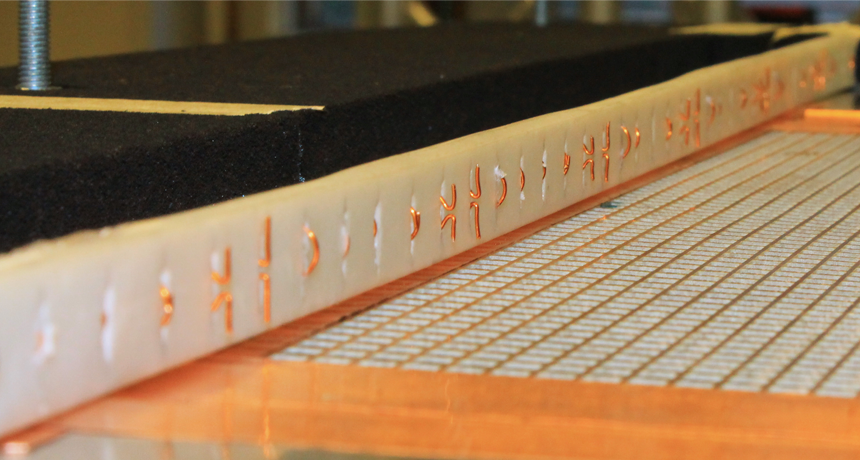Copper-wire ‘metamirror’ reflects selectively
Only one wavelength bounces back; others pass through unimpeded

PICKY MIRROR A mirror made of copper wire embedded in plastic (left) reflects microwaves with a wavelength of about 60 millimeters. Other light passes right through the mirror.
V.S. Asadchy et al/Physical Review Letters 2015







